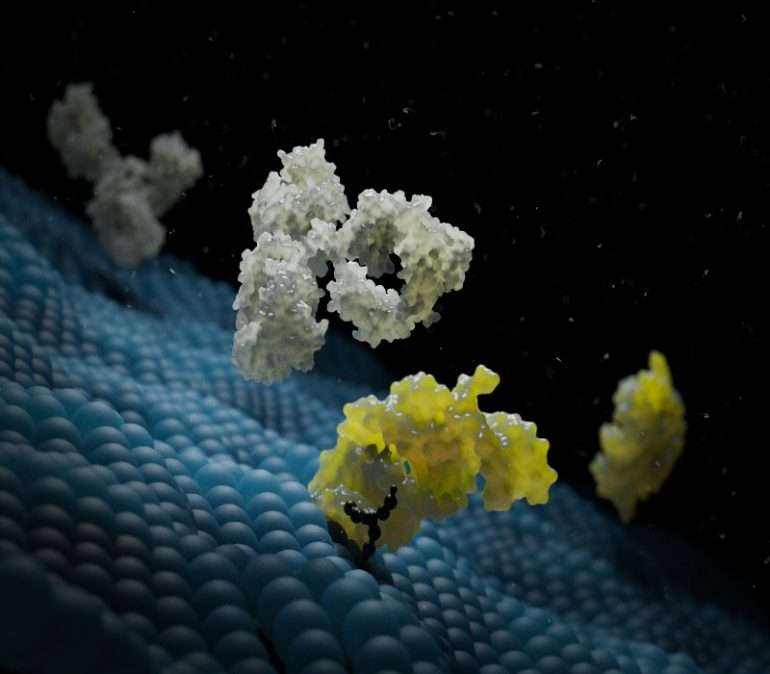Introduction
Aptamers, often referred to as “molecular patience” in Italian, are short, single-stranded DNA or RNA molecules that can bind to specific target molecules with high affinity and selectivity. The concept of aptamers was first introduced by Andrew Ellington and Jack Szostak in 1990, and since then, they have gained significant attention in the scientific community due to their versatile applications in therapeutics, diagnostics, and molecular biology.
Structure and Selection
Aptamers are selected from a random sequence library through a process called Systematic Evolution of Ligands by Exponential Enrichment (SELEX), which was first described by Larry Gold and Craig Tuerk in 1990. This process involves iterative rounds of binding, partitioning, and amplification, eventually leading to a pool of highly enriched sequences that bind to the target of interest with high specificity and affinity. These molecules can fold into complex three-dimensional structures, allowing them to interact with their targets like antibodies.
Applications
Therapeutics
Aptamers have shown promise in therapeutic applications, with one aptamer-based drug, pegaptanib (Macugen), already approved by the U.S. Food and Drug Administration for the treatment of age-related macular degeneration. Other aptamers are currently under clinical investigation for various conditions, ranging from cancer to cardiovascular diseases. Their high specificity, easy synthesis, and low immunogenicity make them attractive therapeutic agents.
Diagnostics
The high affinity and specificity of aptamers for their targets also make them excellent tools for diagnostic applications. They have been used in biosensors, immunoassays, and other diagnostic devices to detect a wide range of targets, including small molecules, proteins, and even entire cells.
Molecular Biology
In molecular biology, aptamers are used as tools to study protein function, as they can be engineered to bind to specific proteins and modulate their activity. They can also be used to deliver specific molecules to cells, offering a powerful tool for targeted drug delivery and gene therapy.
Advances and Future Perspectives
With the rapid advances in synthetic biology and high-throughput sequencing technologies, the field of aptamer research is poised to make significant leaps forward. New methods for aptamer selection and optimization are being developed, and novel applications are being explored in areas such as environmental monitoring, food safety, and personalized medicine.
Conclusion
Aptamers, or “molecular patience,” represent a versatile class of molecules with diverse applications in therapeutics, diagnostics, and molecular biology. As our understanding of these molecules continues to grow, we can expect to see their use expand into even more areas, offering new solutions to some of the most pressing challenges in medicine and biology.
Bibliography
[1]: Ellington, A.D., Szostak, J.W. (1990). In vitro selection of RNA molecules that bind specific ligands. Nature, 346(6287), 818-822. [PMID: 1697402]
[2]: Tuerk, C., Gold, L. (1990). Systematic evolution of ligands by exponential enrichment: RNA ligands to bacteriophage T4 DNA polymerase. Science, 249(4968), 505-510. [PMID: 2200121]
[3]: Hermann, T., Patel, D.J. (2000). Adaptive recognition by nucleic acid aptamers. Science, 287(5454), 820-825. [PMID: 10657289](https://pubmed.ncbi.nlm.nih.gov/10657289/)
[4]: Ng, E.W., Shima, D.T., Calias, P., Cunningham Jr, E.T., Guyer, D.R., Adamis, A.P. (2006). Pegaptanib, a targeted anti-VEGF aptamer for ocular vascular disease. Nature reviews Drug discovery, 5(2), 123-132. [PMID: 16485345]
[5]: Zhou, J., Rossi, J. (2017). Aptamers as targeted therapeutics: current potential and challenges. Nature Reviews Drug Discovery, 16(3), 181. [PMID: 27910804]
[6]: Nimjee, S.M., Rusconi, C.P., Sullenger, B.A. (2005). Aptamers: an emerging class of therapeutics. Annual review of medicine, 56, 555-583. [PMID: 15660522](https://pubmed.ncbi.nlm.nih.gov/15660522/)
[7]: Zhou, W., Jimmy Huang, P.J., Ding, J., Liu, J. (2014). Aptamer-based biosensors for biomedical diagnostics. Analyst, 139(11), 2627-2640. [PMID: 24691665]
[8]: Keefe, A.D., Pai, S., Ellington, A. (2010). Aptamers as therapeutics. Nature Reviews Drug Discovery, 9(7), 537-550. [PMID: 20592747]
[9]: Darmostuk, M., Rimpelova, S., Gbelcova, H., Ruml, T. (2015). Current approaches in SELEX: An update to aptamer selection technology. Biotechnology Advances, 33(6), 1141-1161. [PMID: 25912901]
[10]: Wu, X., Chen, J., Wu, M., Zhao, J.X. (2015). Aptamers: active targeting ligands for cancer diagnosis and therapy. Theranostics, 5(4), 322. [PMID: 25709800]


